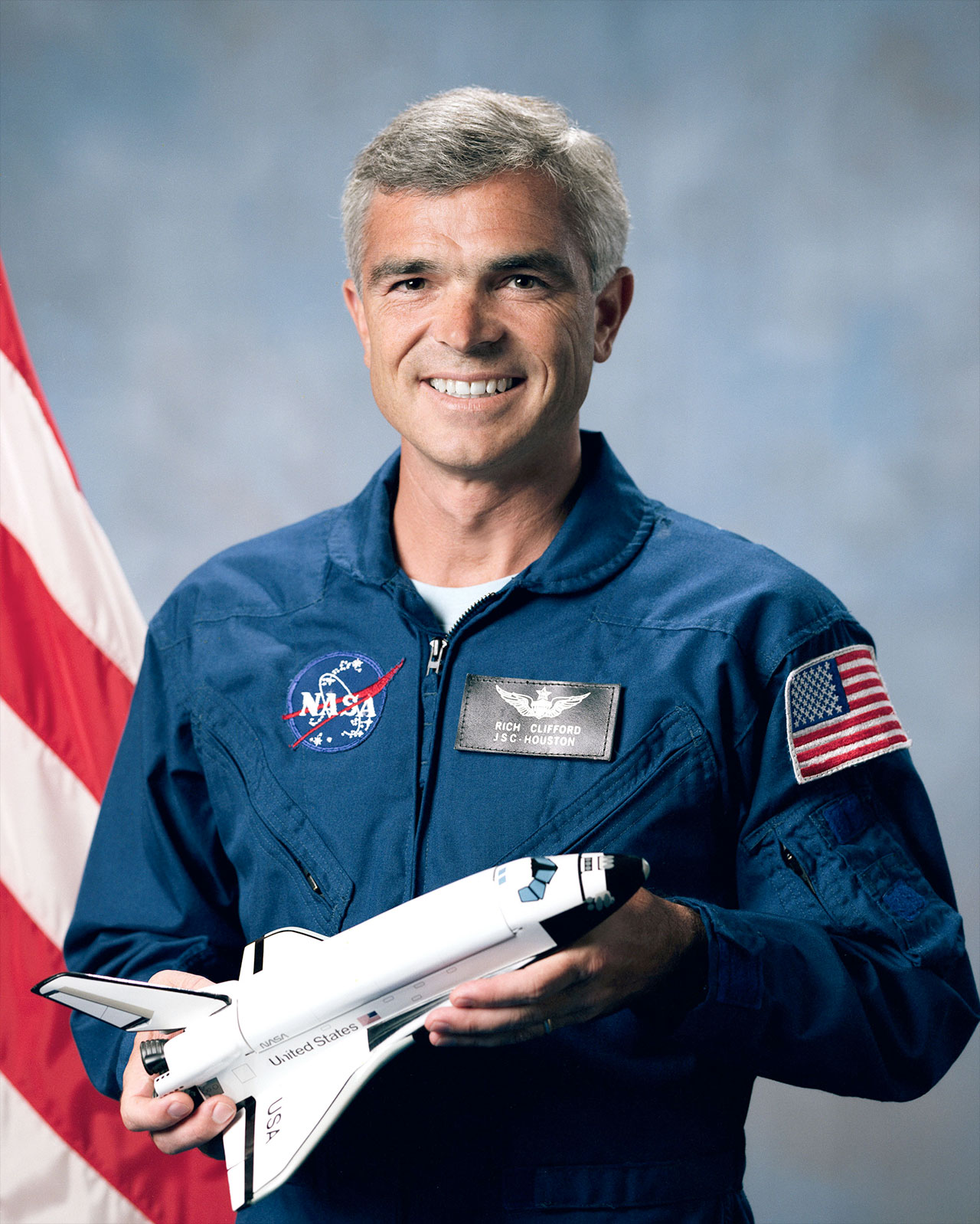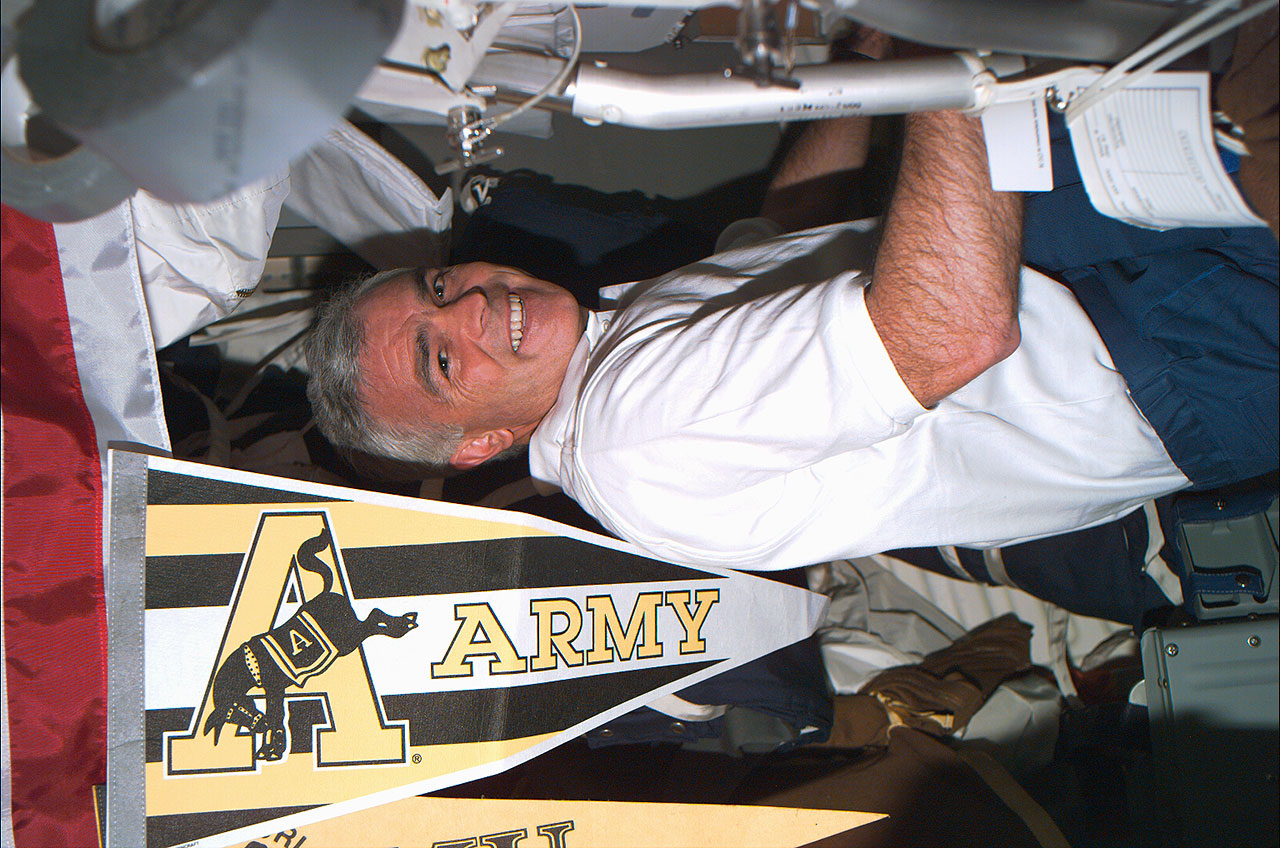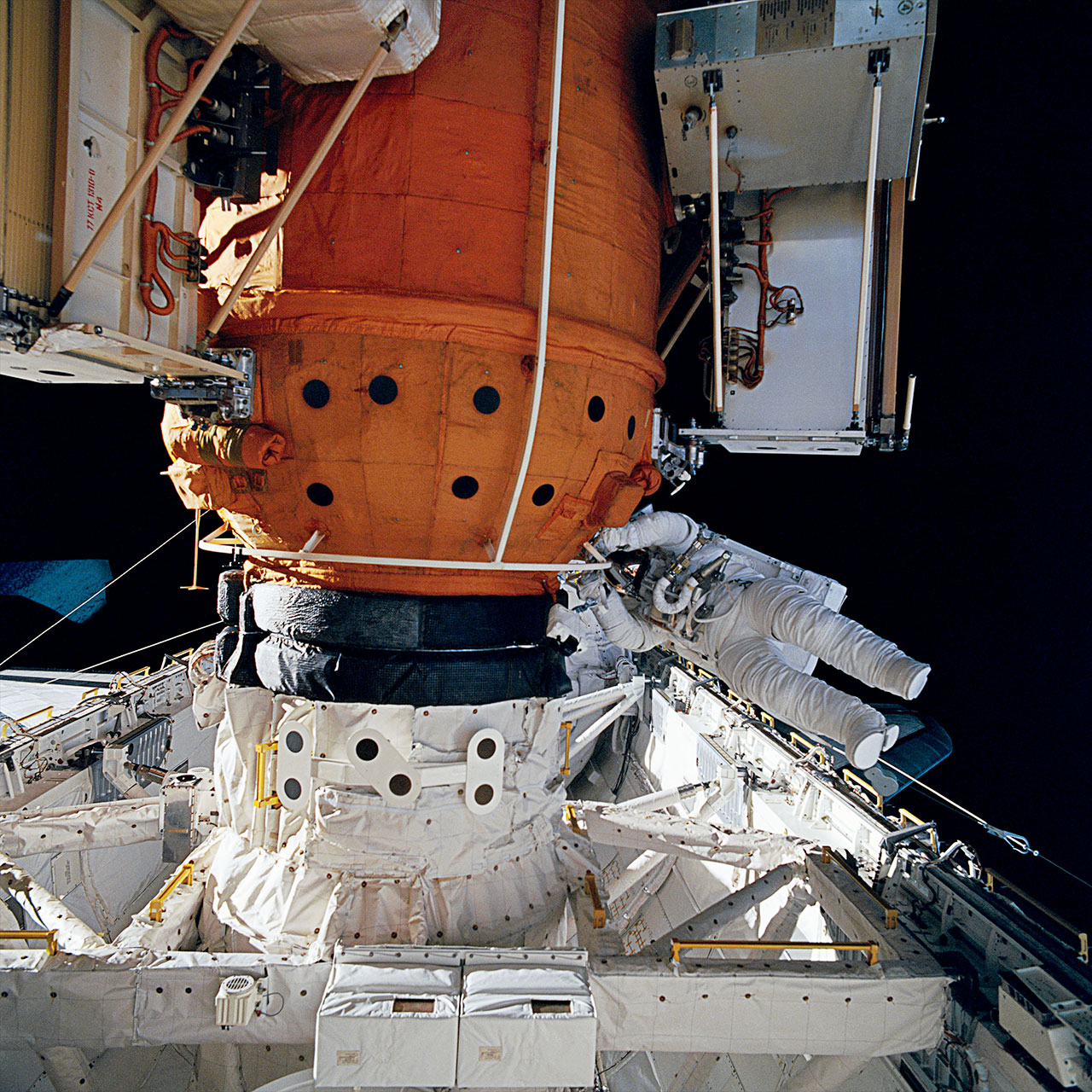Rich Clifford, NASA astronaut who secretly flew with Parkinson's, dies at 69

Michael "Rich" Clifford, who as a NASA astronaut flew on three space shuttle missions, including one after his diagnosis with Parkinson's Disease, has died at the age of 69.
Clifford's death on Tuesday (Dec. 28) was confirmed by the Association of Space Explorers (ASE), a professional organization for astronauts and cosmonauts that included Clifford as a life member. He died due to complications from Parkinson's.
Clifford was chosen to become an astronaut in 1990 with NASA's 13th group of spaceflight trainees (nicknamed "The Hairballs"). He joined the corps three years after being assigned by the U.S. Army to NASA's Johnson Space Center in Houston, where he was serving as a space shuttle vehicle integration engineer at the time of his selection.
After graduating from basic training and spending four months working with the Astronaut Office Mission Development Branch designing and evaluating payload and crew equipment, Clifford was named to his first crew, STS-53. On Dec. 2, 1992, he launched with four others on the space shuttle Discovery on a classified mission for the Department of Defense.
Related: How To Become An Astronaut

The week-long flight deployed the last major military payload flown on the shuttle, as well as conducted medical studies on the effects of microgravity on cells from bone tissue, muscles and blood. The astronauts also released three small metal spheres into space to test ground-based capabilities of detecting debris in low-Earth orbit and tested their own ability to observe ground-based phenomena from space as part of a military experiment.
Discovery returned Clifford and his STS-53 crewmates to Earth on Dec. 9, 1992, landing at Edwards Air Force Base in California.
Clifford lifted off on his second spaceflight 16 months later on April 9, 1994. As a mission specialist aboard the space shuttle Endeavour, Clifford worked with his five STS-59 crewmates to operate the Space Radar Laboratory (SRL), a payload aimed at providing scientists with the data needed to distinguish human-induced environmental changes from other forms of natural change.
Get the Space.com Newsletter
Breaking space news, the latest updates on rocket launches, skywatching events and more!
Related: What It's Like to Become a NASA Astronaut: 10 Surprising Facts

Split into two teams of three astronauts each in on order to work around the clock, Clifford and his crewmates were able to image more than 400 sites, covering approximately 38.5 million miles (62 million km) of Earth or the equivalent of about 20 percent of the planet. The astronauts also used a special cell culture system as part of a joint initiative with the National Institutes of Health.
It was after Clifford landed from STS-59 that he was first diagnosed with Parkinson's, a chronic nervous system disorder that primarily affects movement. As he revealed in a series of interviews years later, he first noticed that his right arm remained limp at his side rather than swinging as normal when he walked.
Wanting to fly again in space, Clifford kept his condition a secret, informing only NASA's medical staff and his commander for this third mission. He was monitored throughout his training, but his symptoms never interfered with his preparations for the tasks he was assigned to complete as a member of the STS-76 crew.

Launching on the space shuttle Atlantis, Clifford and his four crewmates delivered Shannon Lucid to live on board the Russian space station Mir. While docked to the orbiting outpost, he and Linda Godwin became the first U.S. astronauts to perform a spacewalk outside a shuttle docked with a space station.
During the six-hour, two-minute, 28-second extravehicular activity (EVA), Clifford and Godwin attached four experiments to Mir's docking module that characterized the environment around the station.
After landing back on Earth on March 31, 1996, Clifford decided he would not seek another spaceflight. He did not know how quickly his symptoms would progress and so he resigned from the astronaut corps and NASA in January 1997, having logged a total of 27 days, 18 hours and 24 minutes in space while completing 443 orbits of Earth.
Michael Richard Uram "Rich" Clifford was born on Oct. 13, 1952, in San Bernardino, California, but he considered Ogden, Utah to be his hometown. He earned his bachelor of science degree from the United States Military Academy in West Point, New York in 1974, and his master of science degree in aerospace engineering from the Georgia Institute of Technology in 1982.
After graduating from West Point, he was commissioned as a second lieutenant in the U.S. Army. He entered the Army Aviation School and was top of his flight class when he was designated an Army Aviator in 1976. He served for three years as a platoon commander in Germany before attending Georgia Tech and then reported to West Point as an instructor and assistant professor.
In 1986, Clifford graduated from the U.S. Naval Test Pilot School and was designated an experimental test pilot. As a Master Army Aviator, he logged 3,400 hours flying a wide variety of fixed and rotary winged aircraft.
Clifford retired from the Army with the rank of lieutenant colonel in 1995, between his second and third spaceflights.
After leaving NASA, Clifford went to work for Boeing, managing operations for the burgeoning International Space Station. He later served as the company's deputy manager for the space shuttle program through to the final mission in 2011.
Clifford was honored for his service to the space program with the NASA Space Flight Medal and the Army Commendation Medal, among other awards.
After his diagnosis, he became an advocate for people living with Parkinson's, serving on the Patient Council for the Michael J. Fox Foundation for Parkinson's Research. In 2014, a documentary short about his life with the disease, "An Astronaut's Secret," was released.
"Everyone with PD handles it differently," Clifford said in a 2015 interview with the Michael J. Fox Foundation. "Don't let it get in the way of living. Life is too good. Remember, keep going the sky's the limit."
He is survived by his wife of 45 years, Nancy Elizabeth (née Brunson) Clifford, and their two sons, Richard and Brandon.
Follow collectSPACE.com on Facebook and on Twitter at @collectSPACE. Copyright 2021 collectSPACE.com. All rights reserved.
Join our Space Forums to keep talking space on the latest missions, night sky and more! And if you have a news tip, correction or comment, let us know at: community@space.com.

Robert Pearlman is a space historian, journalist and the founder and editor of collectSPACE.com, a daily news publication and community devoted to space history with a particular focus on how and where space exploration intersects with pop culture. Pearlman is also a contributing writer for Space.com and co-author of "Space Stations: The Art, Science, and Reality of Working in Space” published by Smithsonian Books in 2018.In 2009, he was inducted into the U.S. Space Camp Hall of Fame in Huntsville, Alabama. In 2021, he was honored by the American Astronautical Society with the Ordway Award for Sustained Excellence in Spaceflight History. In 2023, the National Space Club Florida Committee recognized Pearlman with the Kolcum News and Communications Award for excellence in telling the space story along the Space Coast and throughout the world.










